|
1998
|
Change of Speaker
|
|
| |
On 4 March 1998 the Rt Hon. Ian Sinclair (NP, Member for New England, NSW, 1963‒98) is elected as Speaker of the House of Representatives, succeeding the Hon. Robert Halverson.
Following his election, he states that:
For so long, as the Leader of the Opposition has suggested, having been a protagonist in this place, it is somewhat different to be sitting here to arbitrate. I confess that I come with mixed feelings as one who loved the old place. As one with my Sancho Panza enjoyed the venue for the course of the Constitutional Convention, I can say to you all that it would be my hope that we can bring to this chamber some of the magic that existed for so long down there. It was a place where personal debate and policy debate I think was of a far higher order than regrettably is often achieved in this place and I shall do what I can to ensure that we can meet these old standards. [1]
|
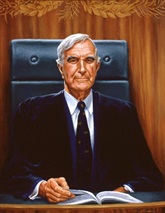
The Rt Hon. Ian McCahon Sinclair, 2001 by Charles Tompson (circa 1940)
Image courtesy of Historic Memorials Collection, Parliament House Art Collection, Canberra ACT
|
|
1998
|
Marathon native title debate
|
|
| |
The Native Title Amendment Bill finally passes the Senate in July 1998 on its third attempt. [2]
The Bill was introduced by the Howard Government to implement amendments to the Native Title Act 1993 as a result of the High Court's decision on the Wik case which determines that native title can coexist on land held by pastoral leaseholders. The amendments are collectively known as the '10 point plan' and are designed to give leaseholders 'certainty' as a result of the High Court decision. The first Bill is amended by the Senate but set aside by the House of Representatives when it couldn't agree to the Senate's amendments. The second Bill is also amended by the Senate but, following an agreement between the Government and Senator Brian Harradine (Independent, Senator for Tasmania 1975‒2005), it is revived in the House of Representatives which reconsiders the Senate's amendments and makes further amendments to give effect to the agreement. The Senate agrees to the Bill as amended, and most of the provisions come into force on 30 September 1998. [3]
|
|
|
1998
|
39th Parliament opened
|
|
| |
The Governor-General, Sir William Deane, opens the 39th Parliament on 10 November 1998, following the Commonwealth election held on 3 October 1998 in which the Liberal‒Nationals Coalition, led by the Hon. John Howard (LP, Member for Bennelong, NSW, 1974‒2007), retains government. [4]
|
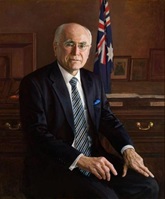
The Hon. John W Howard AC, 2009 by Jiawei Shen (1948‒)
Image courtesy of Historic Memorials Collection, Parliament House Art Collection, Canberra ACT
Read: Governor-General’s speech at opening of 39th Parliament
|
|
1998
|
Change of Speaker
|
|
| |
On 10 November 1998 the Hon. Neil Andrew (LP, Member for Wakefield, SA 1983‒2004), is elected as Speaker of the House of Representatives, succeeding the Rt Hon. Ian Sinclair.
|
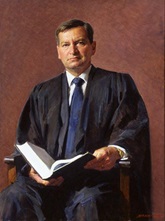
The Hon. John Neil Andrew, 2002 by Robert Hannaford (1944‒)
Image courtesy of Historic Memorials Collection, Parliament House Art Collection, Canberra ACT
|
| 1999 |
Former Speaker James Cope dies |
|
| |
Former Speaker the Hon. James Cope, CMG (ALP, Member for Cook, NSW, 1955; Watson, NSW, 1955–69; Sydney, NSW, 1969–75), dies on 3 February 1999 at the age of 91. He served as Speaker from 27 February 1973 to 27 February 1975.
The House of Representatives pauses to remember former Speaker Cope with a condolence motion moved by Prime Minister Howard on 8 February 1999. The Senate also remembers Mr Cope with a condolence motion moved by the Minister for the Environment and Heritage, Senator the Hon. Robert Hill, on 15 February 1999. |
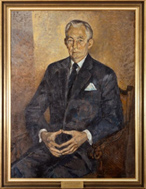
The Hon. James Francis Cope, 1973 by Judy Cassab
(1920–2015)
Image courtesy of Historic Memorials Collection, Parliament House Art Collection, Canberra ACT |
|
1999
|
Standard of dress for members of parliament
|
|
| |
Speaker, the Hon. Neil Andrew (LP, Member for Wakefield, SA 1983‒2004), notes that the dress code for parliamentarians should reflect the Parliament's role as 'the equivalent of the board room of the nation'.
It is widely accepted throughout the community that the standards should involve good trousers, a jacket, collar and tie for men and a similar standard of formality for women. In my view, most members would be uncomfortable with a lesser degree of formality. My comments on an acceptable standard of dress for members apply equally to officers and staff occupying the advisors boxes, members of the press gallery and guests in distinguished visitors gallery. [5]
|
|
|
1999
|
Goods and Services Tax (GST) introduced
|
|
| |
The House of Representatives agrees to Senate amendments and requests on 29 June 1999 in relation to A New Tax System (Goods and Services Tax) Act 1999 and related bills, and requests that the bills be read a third time in the Senate. [6]
The GST is a key element of the Howard Government's tax reform plan, and dominates the Government's campaign in the lead up to the 1998 Commonwealth election. On 14 May 1999 Senator Brian Harradine (Tas. Ind., Senator for Tas., 1975‒2005) announces to the Senate his intention to vote against the introduction of a GST. The Australian Democrats, which shares the balance of power in the Senate, uses its influence to help pass the legislation after winning concessions from the Howard Government. The move divides the parliamentary party and contributes to tensions within the Democrats, eventually resulting in a change of leadership and ultimately the demise of the minor party's influence in the Parliament. Debate on the Bill and 26 related bills lasts a total of 68 hours 54 minutes. [7]
|
Watch: Senator Brian Harradine announcing his intention to vote against the GST, 14 May 1999
Video courtesy of DPS Broadcasting, Parliament House
|
|
1999
|
Indigenous parliamentary representation
|
|
| |
Following his election on 3 October 1998, Senator Aden Ridgeway (AD, Senator for NSW, 1999‒2005) takes his seat in the Senate on 1 July 1999 as the second Indigenous person to be elected to the Commonwealth Parliament.
Senate Ridgeway serves as deputy leader of the Australian Democrats from 6 April 2001 to 21 August 2002. The first Indigenous person to enter the Commonwealth Parliament was Senator Neville Bonner AO (LP, Senator for Queensland, 1971‒83), who was appointed by the Queensland Parliament to replace Senator (later Dame) Annabel Rankin (LP, Senator for Queensland, 1947‒71). [8]
|

Senator Aden Ridgeway
Image courtesy of Parliamentary Handbook
|
|
1999
|
Fire bombs thrown at Parliament House
|
|
| |
On 11 July 1999 a man throws two fire bombs at the front doors of Parliament House 'to keep the bastards honest'. [9]
|
|
|
1999
|
Motion of Reconciliation to Indigenous Australians |
|
| |
On 26 August 1999, and in the presence of members of the stolen generation, each of the two Houses of Parliament pass a resolution expressing deep and sincere regret for unspecified past injustices.
In the Senate, the motion is brought by Senator the Hon. Nick Bolkus which states in part:
Let us, as a Senate, stand with our fellow Australians in their struggle for justice. Let us translate the compassion that this nation felt on the publication of that report into action. [10]
In the House, a motion is brought by the Hon. John Howard (LP, Member for Bennelong, NSW, 1974‒2007), which states in part:
That this House…expresses its deep and sincere regret that indigenous Australians suffered injustices under the practices of past generations, and for the hurt and trauma that many indigenous people continue to feel as a consequence of those practices. [11]
Nine years later, both Houses of the Parliament agree to a formal apology to the 'Stolen Generations', which is made on 13 February 2008.
|
|
|
1999
|
Senate proceedings go live
|
|
| |
On 31 August 1999, the Senate 'authorises the publication by electronic means, including by the Internet, in sound and visual images, of proceedings of the Senate and its committees, subject to the rules applying to radio and television broadcasting of Senate and committee proceedings'. [12]
|
|
|
1999
|
'Shame Australia!! Shame!' graffiti protest
|
|
| |
On 10 September 1999 four men make their way to the roof of Parliament House. They hang a protest banner on the coat of arms at the front of the building's Great Verandah as a sign of support for East Timor which is in the midst of a violent conflict between those who support or oppose East Timor's independence from Indonesia.
A former United Nations volunteer in East Timor uses spray-paint to write 'Shame Australia shame' on the building. He later claims to have been motivated by seeing school children in the foyer who remind him of children he had left behind in East Timor and, 'he then decided that he wanted to do something outrageous to match the outrageous situation in East Timor and to get maximum publicity'. The men are subsequently found guilty of trespassing and damaging Commonwealth property. [13]
|
|
|
1999
|
Republican referendum
|
|
| |
At a referendum held on 6 November 1999, Australians reject a proposal to establish the Commonwealth of Australia as a republic and the proposed insertion of an additional preamble to the Constitution. [14]
|
|
|
1999
|
White Wreath Day
|
|
| |
White wreaths are laid on the front lawns of Parliament House on 24 November 1999 as an act of remembrance of victims of suicide. The display marks the inaugural White Wreath Day, and is designed to draw public attention to the tragedy of suicide and its impact on the Australian community. [15]
|
|
|
1999
|
Parliamentary Service Act 1999
|
|
| |
The Parliamentary Service Act 1999 establishes a separate legal framework covering staff employed by the Parliamentary Departments.
Since the early years of Federation the Parliamentary Departments were staffed under the common service-wide arrangements provided by the Public Service Act 1922, which provided for the administration of the Parliament through five Parliamentary Departments: the Department of the House of Representatives, the Department of the Senate, the Department of the Parliamentary Library, the Department of the Parliamentary Reporting Staff and the Joint House Department. [16]
The Parliamentary Service Act 1999 provides for a separate Parliamentary Service distinct from the Australian Public Service, recognising the unique character of parliamentary service and the obligation of parliamentary staff to serve the Parliament. It re-establishes the Department of the Senate and the Department of the House of Representatives, and provides for other parliamentary departments to be established by resolution of both Houses of Parliament. [17]
|
|
|
2000
|
Parliament welcomes Australians serving in East Timor
|
|
| |
On 7 March 2000 the President of the Senate and the Speaker of the House of Representatives formally extend a welcome to the commander of the international force in East Timor (INTERFET), Major General Peter Cosgrove, who is accompanied by the Chief and Vice Chief of the Defence Force and the Chiefs of the Navy, Army and Air Force.
They also acknowledge the presence of troops who have returned from INTERFET service, officers of the Australian Federal Police and representatives of government and non-government agencies who served in East Timor.[18] The Hon. John Howard (LP, Member for Bennelong, NSW, 1974‒2007), hosts a luncheon at Parliament House to recognise those who have served in East Timor.
|
|
|
2000
|
Midwinter Ball tradition
|
|
| |
The Press Gallery at Parliament House conducts its first annual Midwinter Ball, bringing together journalists, politicians and corporate executives for a night of entertainment in order to raise funds for charity.
|
|
|
2000
|
Laptops permitted in chamber
|
|
| |
On 14 August 2000 members of parliament are given permission to take laptop computers into the House of Representatives chamber. [19]
|
|
|
2001
|
Fatal asylum seeker protest
|
|
| |
Parliament House is often chosen as the symbolic location for demonstrations relating to the democratic rights of individuals. On 2 April 2001 Pakistani national Shahraz Kayani douses himself in petrol and sets himself alight after a prolonged campaign to secure asylum in Australia. He dies several days later. [20]
James Bidgood (ALP, Member for Dawson, Qld, 2007‒10) allegedly attempts to sell photographs taken of the man threatening to set himself alight outside Parliament House. The Speaker of the House of Representatives refers the incident to the Committee of Privileges and Members' Interests, which is proposing to review the question of introducing a code of conduct for members. [21]
|
|
|
2001
|
Commemorative joint sitting of Parliament
|
|
| |
The Commonwealth Parliament meets in Melbourne's Royal Exhibition Building on 9 May 2001 in a historic joint sitting to commemorate the Centenary of Federation and the first sitting of the Parliament in 1901. Each House then meets in the Victorian Parliament House on 10 May 2001.
The first Commonwealth Parliament was opened in the Royal Exhibition Building on 9 May 1901 by the Duke of Cornwall and York, later King George V. The Constitution provided that the Parliament would sit in Melbourne until it could meet at the seat of Government, to be determined by the Parliament. It continued to meet in the Victorian Parliament House in Melbourne until the provisional (Old) Parliament House was opened in Canberra in 1927. [22]
|
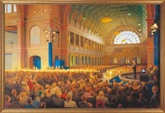
Centenary of Federation Commemorative Sitting of Federal Parliament, Royal Exhibition Building, Melbourne, 9 May 2001 (2003) by Robert Hannaford (1944-)
Image courtesy of Historic Memorials Collection, Parliament House Art Collection, Canberra ACT
|
|
2001
|
Women's Charter for Political Reform
|
|
| |
A Women's Charter for Political Reform prepared by Women Into Politics is launched on 27 June 2001. It calls for:
1. political parties to be included in the Commonwealth Sex and Race Discrimination Acts
2. the Commonwealth Electoral Act to be amended to ensure around 50 per cent of pre-selection candidates are women, penalising parties that failed to comply
3. 50 per cent of cabinets and shadow cabinets to be women
4. Parliament House to provide childcare and have family-friendly sitting hours, and
5. public funding of elections to be increased, while donations to be restricted to $1,000 for individuals and $10,000 for companies. [23]
|
|
|
2001
|
Explosives packages intercepted
|
|
| |
During a regular scan of incoming mail on 3 September 2001, Parliament House security staff intercept three packages addressed to the Hon. Kim Beazley, Senator Natasha Stott Despoja and Senator Bob Brown. They contain bullets and explosive detonators.
The packages are believed to be related to their opposition to the Government's stand on refugees. Senators Brown and Stott Despoja have been outspoken in their condemnation of the government's treatment of the 438 boatpeople aboard the Norwegian freighter, MS Tampa. Mr Beazley refuses to support the government on legislation it says it needed to back up its legal position of refusing the right of the boatpeople to land on Australian soil. [24]
|
|
|
2001
|
9/11 service in Great Hall
|
|
| |
Over 2000 people fill the Great Hall to overflowing on 17 September 2001 for an inter-denominational service to commemorate the people killed and injured by terrorist attacks in New York, Washington DC, and Pennsylvania on 11 September 2001.
In attendance are most members of the Parliament, senior public servants, diplomats, members of the armed services and members of the public. Anglican Bishop to the Defence Force, Tom Frame, speaks of 'a day that has diminished our world'. [25] Immediately following the attacks, the level of security threat is raised from low to medium, and new measures are introduced including screening all people entering the building, with the exception of senators and members, and restricting the use of unaccompanied passes for visitors to private areas of the House. [26]
|
|
|
2001
|
Telecommunications upgraded
|
|
| |
The telecommunications network in Parliament House is upgraded with one of the most technologically sophisticated communications platforms in Australia, with the potential to bring together the Parliament networking and IT systems with the Internet and integrated voice communications. [27]
|
|
|
2001
|
The Peoplescape
|
|
| |
As part of the Centenary of Federation, in November–December 2001 thousands of Australians are honoured with the Peoplescape exhibition outside Parliament House. It is the largest outdoor art installation in Australia.
|
|
|
2002
|
40th Parliament opened
|
|
| |
The Governor-General, the Right Reverend Dr Peter Hollingworth, opens the 40th Parliament on 12 February 2002, following the federal election held on 10 November 2001 in which the Liberal‒Nationals Coalition, led by the Hon. John Howard (LP, Member for Bennelong, NSW, 1974‒2007), retains government. [28]
|
Read: Governor-General’s speech at opening of 40th Parliament
|
|
2002
|
Change of President
|
|
| |
On 19 August 2002 the Hon. Paul Calvert (LP, Senator for Tasmania, 1987‒2007) is elected as President of the Senate, succeeding the Hon. Margaret Reid. He serves as President until 14 August 2007.
|
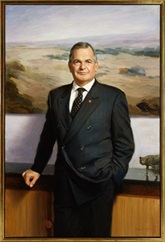
The Hon. Paul Henry Calvert , 2003‒04 by Paul Newton (1961‒)
Image courtesy of Historic Memorials Collection, Parliament House Art Collection, Canberra ACT
|
|
2002
|
Protesters climb flagpole
|
|
| |
On 20 August 2002, Greenpeace demonstrators climb the Parliament House flagpole and unfurl a banner protesting at the Governments' refusal to ratify the Kyoto Protocol on global warming. [29]
|
|
|
2002
|
Bali bombing memorial service
|
|
| |
Relatives and friends of victims of the terrorist bombing in Bali, together with members of parliament, premiers, diplomats and church leaders, attend a national memorial service at Parliament House on 24 October 2002. [30]
During the interdenominational service, the relatives are invited to light candles in memory of their loved ones and to place a flower in a specially-prepared Balinese water garden.
|
|
|
2003
|
Anti-Iraq war protests
|
|
| |
Four anti-Iraq war protesters walk from Melbourne to Parliament House in Canberra in early March 2003, taking their message of peace to country towns along the way. [31]
On 24 March security guards remove a number of anti-war protesters from the House of Representatives chamber as the Prime Minister the Hon. John Howard (LP, Member for Bennelong, NSW, 1974‒2007) answers questions about the war on Iraq. Outside, a crowd of anti-war protesters attempt to storm Parliament House, calling for the Government to bring him Australian troops in Iraq, and a line of police with arms linked form a barricade outside the main doors. Similar anti-war protests are conducted in many cities around the world during 2002 and 2003.
|
|
|
2003
|
Degree conferred upon architect
|
|
| |
The degree of Doctor of Science in Architecture (honoris causa) is conferred upon Professor Romaldo Giurgola AO by the University of Sydney at a ceremony on 28 March 2003. [32]
|
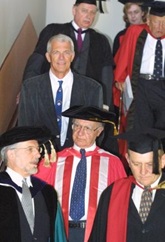
Mr Giurgola (front, centre) followed by Jan Utzon, making their way to the ceremony with the Dean of Architecture, Professor Gary Moore (front, left) and Professor John Carter (front, right), Civil Engineering Adjunct Professor and then Chair of the Academic Board.
Image courtesy of The University of Sydney UniNews, 11 April 2003
|
|
2003
|
Breastfeeding permitted in Senate
|
|
| |
On 13 May 2003 the Senate amends the Standing Orders to permit a breastfeeding infant in the chamber. [33]
|
|
|
2003
|
Governor-General resigns
|
|
| |
On 15 May 2003 the Senate passes a resolution calling for the removal of the Governor-General, the Right Reverend Dr Peter Hollingworth, AC, OBE , following controversy about his role in handling sex abuse allegations within the Anglican Church. He subsequently resigns as Governor-General on 25 May 2003 and is succeeded by Major General Michael Jeffery, AC, CVO, MC (retd ).[34]
|
|
|
2003
|
Bali bombing memorial service
|
|
| |
A memorial to the victims of the Bali terrorist attack is unveiled by Prime Minister the Hon. John Howard (LP, Member for Bennelong, NSW, 1974‒2007) in the gardens of Parliament House on 16 October 2003, witnessed by about 550 survivors and families of bombing victims. The Prime Minister then gives an emotional address to a national memorial service in the Great Hall, saying:
By this service today I hope we may seal forever in this national parliament their place in the heart of the nation. They will never be forgotten. [35]
Twelve doves are released to mark the occasion, and the flags outside Parliament House are lowered to half mast.
|
|
|
2003
|
World leaders visit
|
|
| |
In what Prime Minister the Hon. John Howard (LP, Member for Bennelong, NSW, 1974‒2007) describes as 'an unprecedented sequencing of speeches', the Commonwealth Parliament is addressed on 23 and 24 October 2003 by two of the world's most powerful leaders-United States President George W Bush, and President of the People's Republic of China, Hu Jintao. [36]
|
|
|
2003
|
President of United States addresses Parliament
|
|
| |
The President of the United States of America, George W Bush , addresses a joint meeting of Parliament on 23 October 2003.
Greens Senators Bob Brown (Senator for Tasmania, 1996‒2012) and Kerry Nettle (Senator for New South Wales, 2002‒08) are purportedly suspended from the 'service of the House' for interjecting during the address and not leaving the chamber when directed by the Speaker to do so. [37]
|
Watch: Address by the President of the United States
Video courtesy of DPS Broadcasting, Parliament House
|
|
2003
|
President of China addresses Parliament
|
|
| |
President of the People's Republic of China, His Excellency Hu Jintao , addresses a joint meeting of Parliament on 24 October 2003. [38]
His address follows motions from the Democrats Senator Lyn Allison (Senator for Victoria, 1996‒2008) that both he and the US President George W Bush be received in the Great Hall of Parliament House. The motions reflect minor party opposition to an address in the House of Representatives by a non-democratically elected head of state. Following interjections in President Bush's address on the previous day, Greens Senators Bob Brown and Kerry Nettle do not attend President Hu's address. The events are subsequently considered by the Senate Privileges and Procedure Committees which recommend that any future addresses be to the House of Representatives to which senators are invited as guests. The recommendation is adopted for all future such addresses. [39]
|
Watch: Address by the President of the People's Republic of China
Video courtesy of DPS Broadcasting, Parliament House
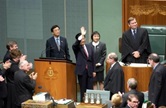
President Hu Jintao addresses a joint meeting of the Australian Parliament
Image courtesy of AUSPIC
|
|
2003
|
Bogong moth infestation
|
|
| |
Each year, Parliament House is invaded by Bogong moths (Agrotis infusa), which migrate annually to the highest peak sin the Southern Alps. The annual infestation is the subject of ongoing efforts by the Joint House Department and subsequently the Department of Parliamentary Services to repel the moths.
On 29 October 2003, during the annual 'Bogong moth season', Senator Meg Lees (AD 1990‒2002, Independent 2002‒3, Australian Progressive Alliance 2003‒5, Senator for South Australia, 1990‒2005) expresses concern about birds around Parliament House dying as a result of poison being used to kill the moths. [40]
Parliament House acts as a giant light trap for the moths as they pass through the Canberra area during October and November. [41]
|
|
|
2004
|
Department of Parliamentary Services established
|
|
| |
On 1 February 2004 the Department of Parliamentary Services is established under the Parliamentary Service Act 1999 and resolutions passed by both Houses.
This new department is responsible for providing integrated services and facilities to occupants of the building, and replaces the Joint House Department, Department of the Parliamentary Reporting Staff and the Department of the Parliamentary Library. [42]
|
|
|
2004
|
Australia-United States Free Trade Agreement
|
|
| |
On 8 February 2004 the Minister for Trade, the Hon. Mark Vaile (NP, Member for Lyne, NSW, 1993‒2008), announces that Australia has entered a free trade agreement with the US, the Australia United States Free Trade Agreement (AUSFTA). There is a simultaneous announcement by the US of a free trade agreement with Australia. [43]
|
|
|
2004
|
Man jumps onto floor of chamber
|
|
| |
On 12 February 2004, security guards drag a man from the floor of the Parliament after he jumps into the House of Representatives chamber from the public gallery during Question Time.
He is later charged with disrupting the procedures of the Parliament, causing alarm and fear to members of the House of Representatives and intimidating officials, and is ordered to not go within 100 metres of Parliament House or the US Embassy. The ACT Magistrates Court later hears that he travelled from Victoria to Canberra to protest against the presence of the US government interests in Australia. [44]
|
|
|
2004
|
Cabinet Room flooded
|
|
| |
On 18 April 2004 the Cabinet Room at Parliament House is flooded, resulting in extensive damage to the carpets in the Cabinet suite, parts of the Prime Minister's foyer and surrounding corridors. There was also some damage to the parquetry flooring, walls, ceilings and some furniture in the area. [45]
|
|
|
2004
|
Parliament House Vista heritage-listed
|
|
| |
The Australian Heritage Council adds the Parliament House Vista to the Commonwealth Heritage List. [46] The heritage status of Parliament House is the subject of ongoing debate given the unique position of the parliamentary precincts.
|
|
|
2004
|
Twenty millionth visitor
|
|
| |
On 12 May 2004 the President of the Senate and the Speaker of the House welcome the twenty-millionth visitor to Parliament House in Canberra since it opened on 9 May 1988. [47]
|
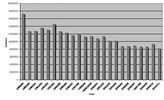
Parliament House visitors 1988‒2011
DPS Annual Report, 2010-11, Fig. 4.8
|
|
2004
|
Central Reference Document
|
|
| |
A Central Reference Document is prepared in July 2004 by Pamille Berg AO, expressing the architect's intent in the design of the building and its surroundings, and to provide the Presiding Officers and Parliamentary departments with a text to guide the daily management of Parliament House. [48]
|
|
2004 |
Former Speaker Dr Henry Jenkins dies |
|
| |
Former Speaker the Hon. Dr Henry (Harry) Jenkins (ALP, Member for Scullin, Vic., 1969‒85), dies on 27 July 2004 at the age of 78. He served as Speaker from 21 April 1983 to 11 February 1986.
The House of Representatives pauses to remember former Speaker Jenkins with a condolence motion moved by Prime Minister Howard on 3 August 2004. The Senate also remembers Dr Jenkins with a condolence motion moved by the Leader of the Government in the Senate, Senator the Hon. Robert Hill, on the same day. |
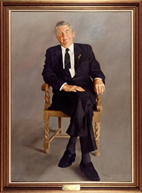
The Hon. Dr Henry Alfred Jenkins, 1985 by Wesley Walters (1928–2014)
Image courtesy of Historic Memorials Collection, Parliament House Art Collection, Canberra ACT |
|
2004
|
Change of Speaker
|
|
| |
On 16 November 2004 the Hon. David Hawker (LP, Member for Wannon, Vic 1983‒2010) is elected as Speaker of the House of Representatives, succeeding the Hon. Neil Andrew. He has authority to act as Speaker following the dissolution of the Parliament on 17 October 2007 and the date of election of his successor on 12 February 2008.
|
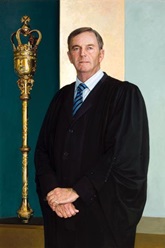
The Hon. David Peter Maxwell Hawker , 2007 by Jiawei Shen (1948‒)
Image courtesy of Historic Memorials Collection, Parliament House Art Collection, Canberra ACT
|
|
2004
|
41st Parliament opening |
|
| |
The Governor-General, Major General Michael Jeffrey, opens the 41st Parliament on 16 November 2004, following the federal election held on 9 October 2004 in which the Liberal‒Nationals Coalition, led by the Hon. John Howard (LP, Member for Bennelong, NSW, 1974‒2007), retain government. [49]
|
Read: Governor-General’s speech at opening of 41st Parliament
|
| 2005 |
Memorial Service for victims of crash of RAN helicopter on Nihas
|
|
| |
A national commemorative service is held in the Great Hall of Parliament House in Canberra on 15 April 2005 for nine ADF personnel killed in the crash of a Navy Sea King helicopter on the Indonesian island of Nias. The crash occurred while the crew was conducting an humanitarian aid sortie.
|
|
|
2005
|
Capital Hill unconformity heritage-listed |
|
| |
A geological feature known as the Capital Hill unconformity beneath Parliament House is entered in the Commonwealth Heritage List on 3 June 2005, together with the State Circle Cutting. Together, these sites provide the keys to interpreting the ancient geological landscape of the Canberra region. [50]
|
|
|
2005
|
White powder security incidents
|
|
| |
The Speaker reports to the House on enhanced security measures to reduce the risk of letters containing hazardous substances entering Parliament House.
This follows three incidents over the previous two weeks where white powder is found in letters delivered to the building. In all instances the powder is found to be non-hazardous, but the new procedures are considered a necessary security measure. [51] Parliament House correspondence is automatically security-checked in the so-called 'White Powder Room' in a dedicated room in the building's basement. According to a submission to the Chairman of the Joint House Committee on Privileges, the room was installed after several incidents involving the threat of anthrax contamination, including the death of two postal workers in the United States. [52]
|
|
|
2005
|
Combet v Commonwealth case |
|
| |
On 21 October 2005 the High Court judgment in Combet v Commonwealth places responsibility on Parliament for ensuring that appropriations are properly expended. [53]
|
|
|
2005
|
3000 Candles of Hope
|
|
| |
On 30 November 2005, protesters light 3000 Candles of Hope in Federation Mall at the front of Parliament House as part of a campaign to save the life of Australian Van Tuong Nguyen who faces execution in Singapore's Changi Prison after being convicted of drug trafficking on 20 March 2004. The case sparks debate in the Parliament over the death penalty. [54]
This date marks the anniversary of the first abolition of the death penalty in a European state, the Great Duchy of Tuscany in 1786. The Canberra vigil, hosted by the Amnesty International Parliamentary Group, provides the opportunity for parliamentarians, Canberrans and visitors to express their support for Van and his family by lighting a candle and standing in silent opposition to the death penalty. It is part of an international action, Cities of Life-Cities against the Death Penalty, whereby 300 cities around the world including 29 capital cities. [55]
|
|
|
2005
|
Joint Standing Committee on the Parliamentary Library
|
|
| |
The Parliamentary Service Act 1999 is amended to establish the position of the Parliamentary Librarian as a statutory position, and a Joint Standing Committee on the Parliamentary Library which effectively supersedes the functions previously undertaken by standing committees of each House meeting jointly. [56]
|
|
|
2005
|
Abortion pill RU486 |
|
| |
In a rare expression of cross-party cooperation, four women from the Australian Democrats, Australian Labor Party, Liberal Party and National Party jointly introduce a private senators' bill on 8 December 2005 to remove ministerial power over the availability of the 'abortion pill', RU486.
Senators Claire Moore (ALP, Senator for Queensland, 2001‒) , Lyn Allison (AD, Senator for Victoria, 1996‒2008), Judith Troeth (LP, Senator for Victoria, 1993‒2011), and Fiona Nash (NP, Senator for NSW, 2004‒) co-sponsor the Therapeutic Goods Amendment (Repeal of Ministerial Responsibility for Approval of RU486) Bill 2005. The Bill is passed by the Parliament and assented to on 3 March 2006, becoming one of only 13 private senators' bills to pass into law since 1901. [57]
|
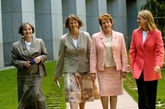
The initiating senators of the RU486 bill after it passed through the House of Representatives: (from left) Claire Moore (Labor), Lyn Allison (Australian Democrats), Judith Troeth (Liberal) and Fiona Nash (Nationals).
Image courtesy of AAP
|
|
2005
|
Security wall
|
|
| |
Parliament House security is upgraded in the aftermath of terrorist attacks overseas, including those in New York and Washington in 2001 and in Bali in 2002. A waist-high 40-centimetre thick security wall is built around Parliament House, in response to heightened concerns about security.
The wall replaces water-filled plastic barricades that have surrounded the building for almost two years, and is part of an $11.7 million security upgrade that includes retractable metal bollards at all access roads, and strengthened external windows around ministerial offices. [58]
|
|
|
2006
|
UK Prime Minister the Hon. Tony Blair
|
|
| |
On 27 March 2006 the Prime Minister of the United Kingdom, the Hon. Tony Blair , gives an address to the Parliament. [59]
This is the first address given by a visiting foreign head of state where Senators are invited as guests to a sitting of the House of Representatives. According to the House of Representatives Practice:
The initial practice on such occasions was that the House and Senate would meet (concurrently rather than in joint session) in the House of Representatives Chamber to hear the address. The Senate met in the House Chamber at the House's invitation; having agreed that the Speaker would preside and that the procedures of the House would apply so far as they were applicable.
Following an incident in 2003, the House adopted Senate Committee recommendations that future addresses by invited dignitaries be given to the House of Representatives to which senators are invited as guests. [60]
|
Watch: Address by the Prime Minister of the United Kingdom
Video courtesy of DPS Broadcasting, Parliament House
|
|
2006
|
Beaconsfield miners' reception
|
|
| |
The Great Hall is often the venue for commemorative or celebratory events that have particular significance or meaning for Australians. On 30 May 2006, a public reception is hosted in the Great Hall by Prime Minister the Hon. John Howard (LP, Member for Bennelong, NSW, 1974‒2007) for two Tasmanian miners, Brant Webb and Todd Russell, in recognition of their dramatic rescue from the Beaconsfield mine after 14 days trapped underground. [61]
|
|
| 2006 |
Human cloning laws |
|
| |
On 19 October 2006 Senator Kay Patterson (LP, Senator for Victoria, 1987‒2008) introduces a private senator's bill dealing with human cloning and human embryo research. It becomes one of only 13 private senator's bills to become law since 1901.
The bill seeks to amend theProhibition of Human Cloning for Reproduction Act 2002 and the Research Involving Human Embryos Act 2002, both of which received Assent on 19 December 2002. The amendment bill is assented to on 12 December 2006, and becomes the Prohibition of Human Cloning for Reproduction and the Regulation of Human Embryo Research Amendment Act 2006 .[62]
|
|
2006 |
Former President of the Senate Sir Harold Young dies
|
|
| |
Former President of the Senate the Hon. Sir Harold Young, KCMG (LP, Senator for South Australia, 1967‒83), dies on 21 November 2006 at the age of 83. He served as President from 18 August 1981 to 21 April 1983.
The Senate pauses to remember former President Young with a condolence motion moved by the Minister for Finance and Administration, Senator the Hon. Nick Minchin, on 27 November 2006. |
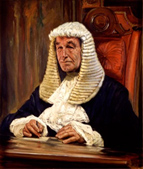
The Hon. Sir Harold William Young KCMG, 1983 by Vernon Jones (1908–2002)
Image courtesy of Historic Memorials Collection, Parliament House Art Collection, Canberra ACT |
|
2006
|
Senate standing committee changes
|
|
| |
The Senate standing committee system is amended to restore its pre-1994 structure. This involves amalgamating the pairs of committees in each subject area, and this arrangement remains until 2009 when the post-1994 structure is restored. [63]
|
|
|
2007
|
Kyoto Protocol
|
|
| |
Australia signs the Kyoto Protocol, the international agreement to limit greenhouse gas emissions passed by the United Nations in 1997. [64]
|
|
| 2007 |
Memorial service for Jeannie Ferris
|
|
| |
Senator Jeannie Ferris (LP, Senator for South Australia, 1996‒2007) is farewelled in a memorial service in the Great Hall following her death from ovarian cancer in April 2007. A former journalist and lobbyist, Ferris was Deputy Government Whip in the Senate from 2001 to 2002, and Government Whip from 22 August 2002 until her death.
In 2006 the Senate, on the motion of Senators Ferris, Allison and Moore, Allison, established an inquiry into gynaecological cancers. The report, Breaking the silence: a national voice for gynaecological cancers, highlighted the issues involved in dealing with this form of cancer, particularly for women in rural Australia. The government responded by accepting all recommendations, including providing $1 million for a new gynaecological cancer centre.
|
|
|
2007
|
Message stick tabled in the Senate
|
|
| |
Senator Bob Brown is given leave by the Senate to table a message stick, plus a translation, in the course of debate on the 2007 Northern Territory emergency response legislation.
The message stick was presented to the Parliament by Raymattja Marika on behalf of the Northern Territory Indigenous peoples, at the Gulkula meeting at Garma in the Northern Territory on 3 and 4 August 2007. The message stick reads:
Stop the legislation. Sit down and talk. No more dispossession. [65]
|
|
|
2007
|
Change of President
|
|
| |
On 14 August 2007 the Hon. Alan Ferguson (LP, Senator for South Australia, 1992‒2011) is elected as President of the Senate, succeeding the Hon. Paul Calvert.
|
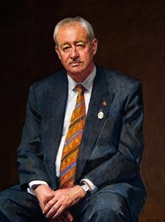
The Hon. Alan Baird Ferguson , 2009 by Robert Hannaford (1944‒)
Image courtesy of Historic Memorials Collection, Parliament House Art Collection, Canberra ACT
|
|
2007
|
Canadian Prime Minister the Rt Hon. Stephen Harper
|
|
| |
On 11 September 2007 the Prime Minister of Canada, the Rt Hon. Stephen Harper , addresses the Parliament. In accordance with a procedure agreed to in 2003, the address is presented in the House and Senators attend as guests of the House. [66]
|
Watch: Address by the Prime Minister of Canada
Video courtesy of DPS Broadcasting, Parliament House
|
|
2007
|
Matt Price memorial service
|
|
| |
A memorial service is held in the Great Hall on 13 December 2007 in honour of the late Matt Price, a highly-regarded political and sports journalist and member of the Canberra Press Gallery. The Great Hall is often the venue for commemorative or celebratory events that have particular significance or meaning for Australians. [67]
|
|